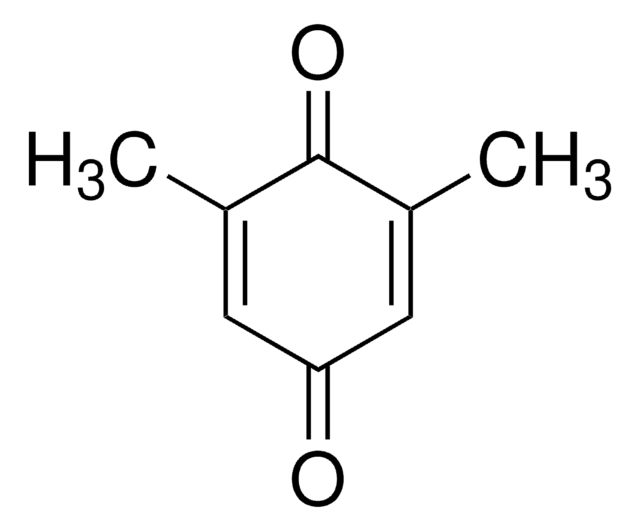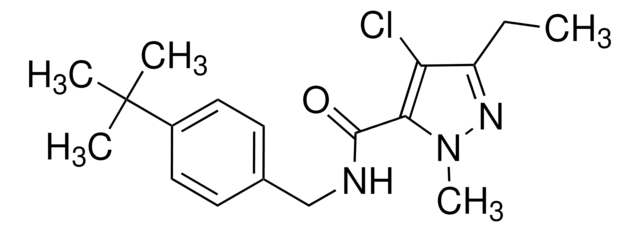39579
2,5-Dimethyl-1,4-benzoquinone
≥98.0%
Sinonimo/i:
2,5-Dimethyl-2,5-cyclohexadiene-1,4-dione, 2,5-Dimethyl-p-benzoquinone, 2,5-Dimethyl-p-quinone, 2,5-Dimethylbenzoquinone, 2,5-Xyloquinone, 3,6-Dimethyl-p-benzoquinone
Scegli un formato
Scegli un formato
About This Item
Prodotti consigliati
Saggio
≥98.0%
Punto di fusione
123-125 °C
Solubilità
toluene: soluble 0.5 g/10 mL, clear to faintly turbid, yellow to brown
Gruppo funzionale
ketone
Stringa SMILE
CC1=CC(=O)C(C)=CC1=O
InChI
1S/C8H8O2/c1-5-3-8(10)6(2)4-7(5)9/h3-4H,1-2H3
MYKLQMNSFPAPLZ-UHFFFAOYSA-N
Categorie correlate
Descrizione generale
Applicazioni
Avvertenze
Danger
Indicazioni di pericolo
Consigli di prudenza
Classi di pericolo
Acute Tox. 3 Oral - Eye Irrit. 2 - Skin Irrit. 2 - STOT SE 3
Organi bersaglio
Respiratory system
Codice della classe di stoccaggio
6.1C - Combustible acute toxic Cat.3 / toxic compounds or compounds which causing chronic effects
Classe di pericolosità dell'acqua (WGK)
WGK 3
Punto d’infiammabilità (°F)
Not applicable
Punto d’infiammabilità (°C)
Not applicable
Dispositivi di protezione individuale
dust mask type N95 (US), Eyeshields, Faceshields, Gloves
Scegli una delle versioni più recenti:
Possiedi già questo prodotto?
I documenti relativi ai prodotti acquistati recentemente sono disponibili nell’Archivio dei documenti.
I clienti hanno visto anche
Active Filters
Il team dei nostri ricercatori vanta grande esperienza in tutte le aree della ricerca quali Life Science, scienza dei materiali, sintesi chimica, cromatografia, discipline analitiche, ecc..
Contatta l'Assistenza Tecnica.













